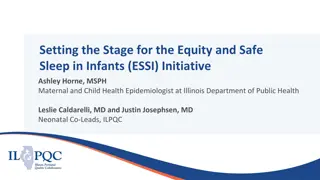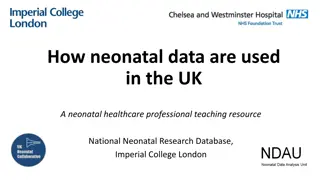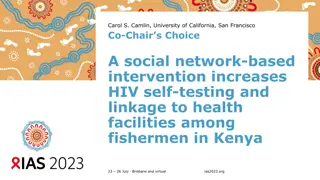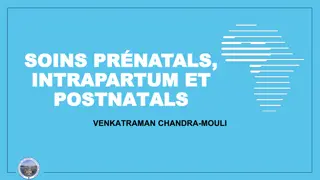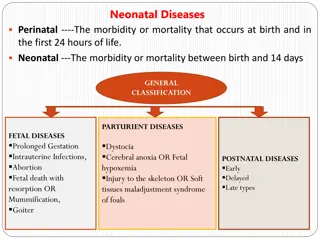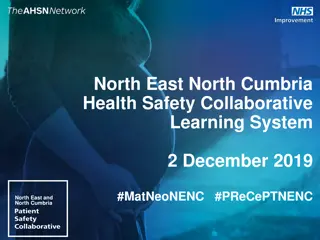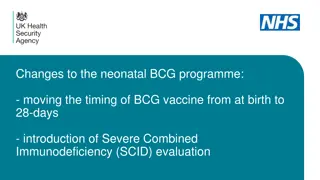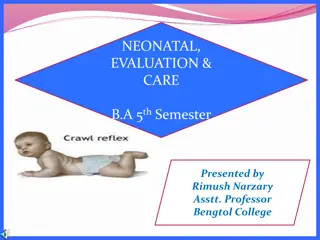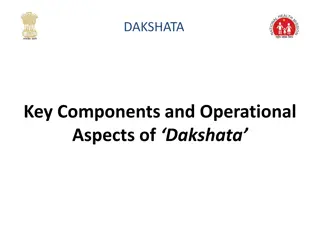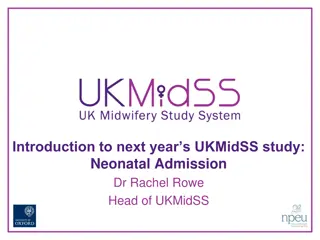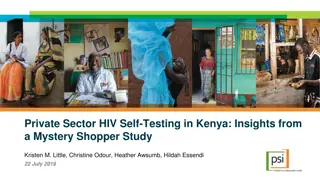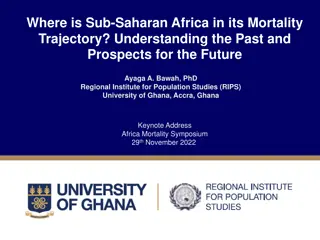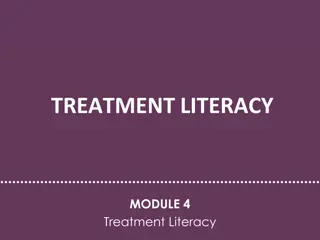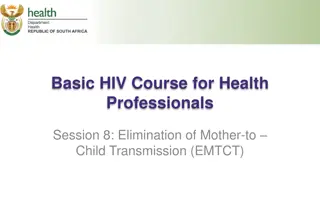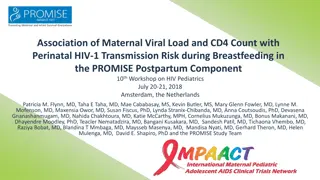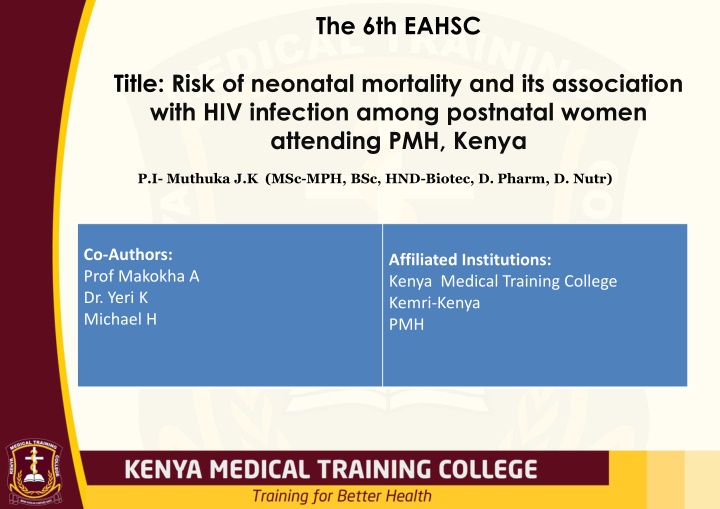
Risk of Neonatal Mortality and HIV Association Among Postnatal Women in Kenya
Explore the risk of neonatal mortality and its link to HIV infection in postnatal women at PMH in Kenya. Addressing the challenge of maternal and child health with a focus on HIV-positive mothers and their newborns. Research objectives include determining mortality outcomes and associated risk factors among postnatal women.
Download Presentation

Please find below an Image/Link to download the presentation.
The content on the website is provided AS IS for your information and personal use only. It may not be sold, licensed, or shared on other websites without obtaining consent from the author. If you encounter any issues during the download, it is possible that the publisher has removed the file from their server.
You are allowed to download the files provided on this website for personal or commercial use, subject to the condition that they are used lawfully. All files are the property of their respective owners.
The content on the website is provided AS IS for your information and personal use only. It may not be sold, licensed, or shared on other websites without obtaining consent from the author.
E N D
Presentation Transcript
The 6th EAHSC Title: Risk of neonatal mortality and its association with HIV infection among postnatal women attending PMH, Kenya P.I- Muthuka J.K (MSc-MPH, BSc, HND-Biotec, D. Pharm, D. Nutr) Co-Authors: Prof Makokha A Dr. Yeri K Michael H Affiliated Institutions: Kenya Medical Training College Kemri-Kenya PMH
Background Information Global average of 30 ND/1000 live births exist(Joy et al.,2006). NM rates have relatively remained unchanged in DCs (Stoll, 1997). HIV in ANC is 15 - 40% in countries with the highest prevalence (Black & Kelly). Over of NBDs occur in Africa & has highest risks of NMs (Hyder et al., 2010). Risk extends to neonates not HIV+ thus salient mortalities (Kumar et al., 2005). HIV PG health risks to mothers; TB and/or malaria, in DCs (McIntyre et al., 2002). Little is known on the association of NM and indirect HIV effects DCs.
Problem Statement NMs challenge health sector with insufficient progress to improving MCH . There is little and or no progress made over a decade on the same. Maternal HIV in PG is given less focus since PMTCT inception yet indirect NMs. Risk of NM is possible despite the newborns not being infected (KDHS, 2008). Justification 40-60% of < 5s children represent NMs & most deaths at infancy (WHO). To attain health SDGs/ increase life expectancy, valid data on salient NMs is crucial. (Stoll, 1997). Guidelines/policies on adverse neonatal outcomes & association with HIV exist, but there is a gap in terms feedback on PMTCT program impacts.
Research Objectives General. To determine the risk of neonatal mortality outcome and its association with HIV infection among postnatal women attending PMH. Specific. 1) To establish the proportion of HIV positive postnatal women with and without NM outcomes . 2) To compare the proportion of HIV between postnatal women with NMs and postnatal women without NMs. 3) To determine other risk factors closely associated with NMs among postnatal women. Hypothesis-Null There is no difference in proportion of NM outcomes between HIV+ and HIV- postnatal women in PMH
Materials & Methods Study area Maternal & Neonatology units -(Health Records) Study design Un-matched case-control Study population NMs (cases)& neonatal live births at least up to the first 28 days (controls) from postnatal period women of a known HIV status. Inclusion Criteria NMs(cases) & Neonatal live births( controls) from a postnatal period woman of known HIV status, who had attended ANC clinic & delivered at PMH.
Material &Methods Contd Sample size determination Hypothetical proportion based on the exposure prevalence of HIV in general population of PG women in Africa(15-40 %). Epi.Info. Calc version, sample obtained -256 at 1:1ratio. Assumed OR-2.5, power of 90% & C.I- 95% [1.96]. Sampling Procedure Information was extracted from every file record(woman & the newborn outcome ) within the first 28 days, retrospectively . Data collection tools Pre-tested data abstraction tool. Data Analysis Descriptive, Bivariate, logistic and multivariate. Ethical considerations observed
Results Descriptive Analysis Socio-demographic characteristics of mothers among cases and controls, mother s unemployment had a V+ relationship with NM outcome; 95% C.I (0.22-0.78), p=0.006 ANC Visits: (55.5%) visited as per the WHO recommended frequency, no difference ((P>0.05) Bivariate Analysis Mother s HIV and health status during pregnancy (cases & controls) HIV : (12.5%) cases & (3.9%) controls, [OR= 3.51; 95%CI: 1.25-9.91; P=0.012]. Co-morbidities: cases (14.8%) : controls (4.7%), [OR= 3.54; 95%CI: 1.37-9.20; P=0.006]. Mother s hemoglobin level < 10.2 mg/dl : cases (18.8%) & controls (5.5%), [OR= 3.99; 95%CI: 1.65-9.63; P=0.001].
Contd Comparison: cases & controls by birth weight & health status at birth Sick at birth: Cases (91.4%) > Controls (78.9%), [OR= 2.84; 95%CI: 1.34-6.02; P=0.005]. LBW: cases (70.3%) > than controls (41.4%), [OR= 3.35; 95%CI: 2.00-5.62; P<0.001]. Multivariate Analysis-Reduced Model (Risk factors of NM) LBW: Cases: controls (41.4%), [AOR= 3.97; 95%CI: 2.26-6.98; P<0.001]. Co-morbidities: [AOR= 3.84; 95%CI: 1.32- 11.16; P=0.013]. Mother s hemoglobin level :,[AOR= 3.18; 95%CI: 1.19-8.46; P=0.021]. Unemployment: cases: controls, [AOR=0.43; 95%CI: 0.22- 0.85; P=0.016].
Discussion HIV+ revealed risk of NM at the bivariate analysis.Controlling for confounders, it was insignificant. HIV in postnatal women is linked with adverse neonatal outcomes (Joseph et al., 2009). Association btwn HIV & infant mortality has occurred in an increasing manner (Bloland et al., 1995). In Malawi, maternal HIV and perinatal outcome, NM showed v+ association (Darmstadt et al., 2004). In Pakistan, NM showed an association with HIV in PG (ImtiazJehan et al., 2009).
Conclusions 16(12.5%) cases were born from HIV mothers as compared to 5(3.9%) of the controls. HIV significantly associated with NM in bivariate analysis, not significant at the multivariate. Logistic regressions on other factors as independent predictors of NM: Low birth weight (41.4%), [AOR= 3.97; 95%CI: 2.26-6.98; P<0.001]. Infections/co-morbidities, [AOR= 3.84; 95%CI: 1.32- 11.16; P=0.013]. Mother s hemoglobin level, [AOR= 3.18; 95%CI: 1.19-8.46; P=0.021]. Unemployment, [AOR=0.43; 95%CI: 0.22- 0.85; P=0.016].
Recommendations A prospective study design (cohort) is to broadly shed more light on the HIV and risk of NM. Integrated approach during PMTCT services focusing on intervening variables ensuring adequate nourishment during pregnancy. An individualized attention to a newborn with LBW as a special entity of HIV Case. Hemoglobin levels during PG should be normalized in case of suspected deviation from norms. Equal care at early and late neonatal stages irrespective of mother s HIV status
Acknowledgement sponsors/affiliated institutions KMTC Research Office. Kemri, Kenya Pumwani Maternity Hospital. UoN-KNH ERC

